Ever wonder how to cook asparagus? You’ve come to the right place! This post has step by step instructions for grilling, air frying, roasting asparagus – plus many more cooking methods. Plus, yummy asparagus recipes you can make at home!
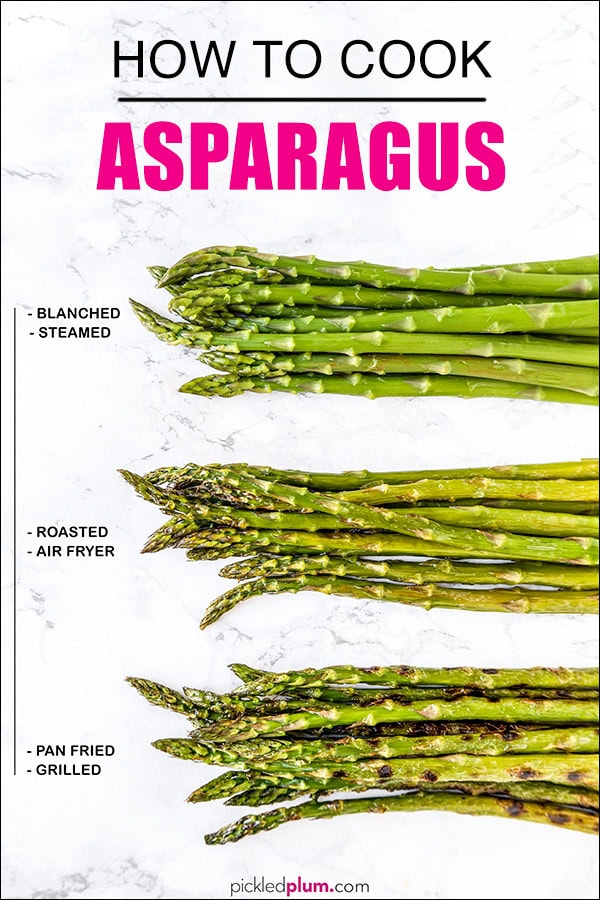
Asparagus is a spring vegetable and a close relative to the onions and garlic family. It has a meaty bite – and tastes both bright and slightly grassy. Only the young shoots are eaten typically since the shoots tend to get a bit woody and stringy as they get older.
I think you’ll agree with me that there’s nothing worse than picking up asparagus at the store, preparing it – only to get a disappointing, reedy, unchewable mouthful halfway down the stalk… ugh.
Not to worry!
Luckily today’s post is all about all the different methods on how to cook asparagus – with details thrown in on how to choose it at the market – and some great asparagus recipes.
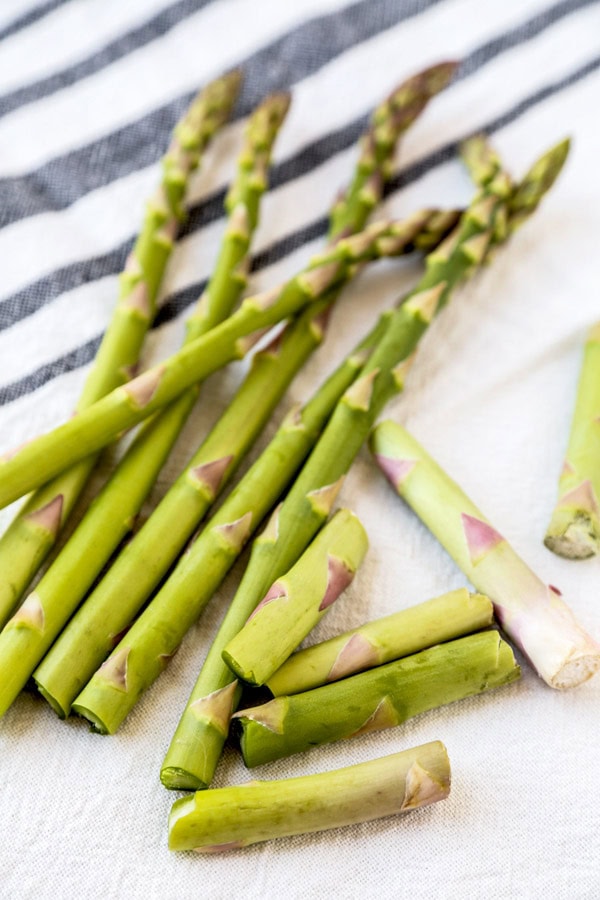
How To Select The Best Asparagus
The best way to tell if asparagus is fresh is to look for bright green or slightly purplish spears with the tips compact (the more closed the better).
Also, test the stems. Are they firm? That’s good! Avoid stems that are limp or appear ‘woody’.
My favorite trick to tell good vs bad asparagus is to give it a little squeeze. Seriously! Squeeze a bunch together. If it’s squeaky that’s a great indicator that it’ll be good to go for tonight’s dinner.
How to trim asparagus
Some people prefer to snap asparagus spears by hand while others prefer using a knife. Both options work well if you ask me but there is one drawback to snapping versus chopping – you may end up inadvertently wasting some of the edible bit of the spear. And you will also have to trim the snapped ends with a knife if you want the spears to be even in length.
With a knife you can cut where the green bit of the stalk begins to turn white, which is the fibrous and inedible part. You can then take a vegetable peeler to the stems and shave off a few layers to make the ends look fancy, French restaurant style.
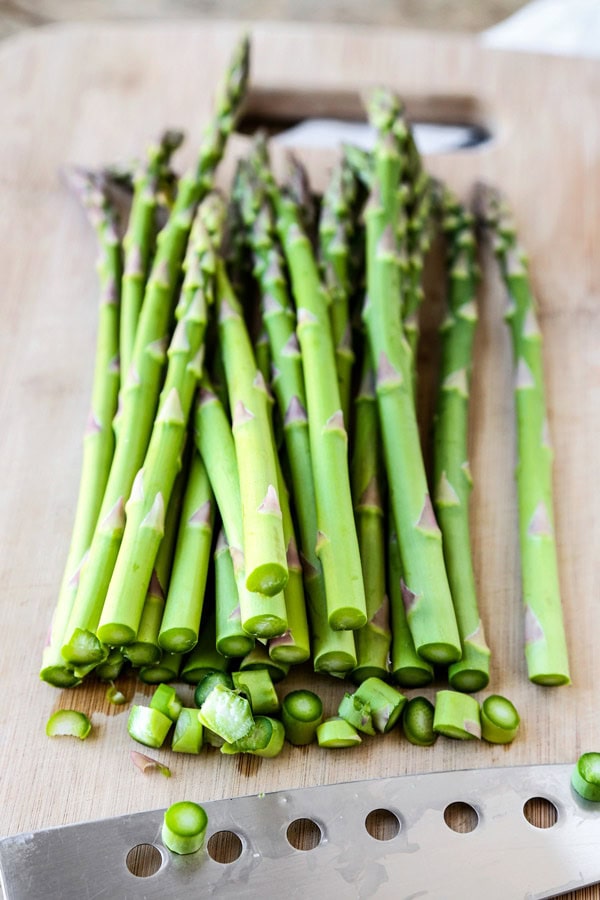
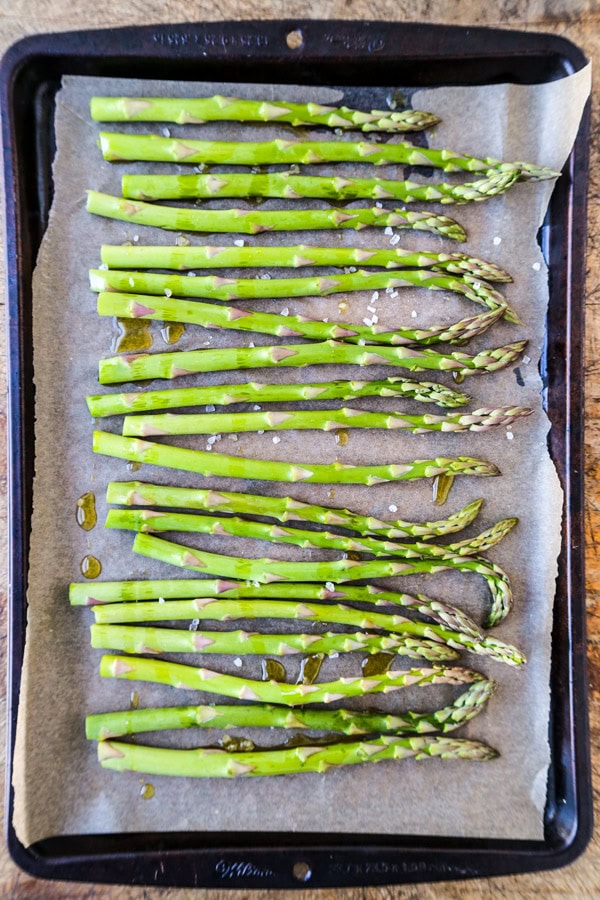
How to Cook Asparagus in the Oven
- Preheat the oven to 400°F (204ºC).
- Trim the ends of the asparagus spears.
- Toss the asparagus in a little olive oil, salt and pepper and place them on a baking sheet covered with parchment paper.
- Roast in the oven for 8-12 minutes.
Keep in mind that the cooking time can be shorter or longer depending on the size of the spears. Check on the consistency by pricking a knife in a spear – you want the asparagus to be tender but still yielding a little crunch.
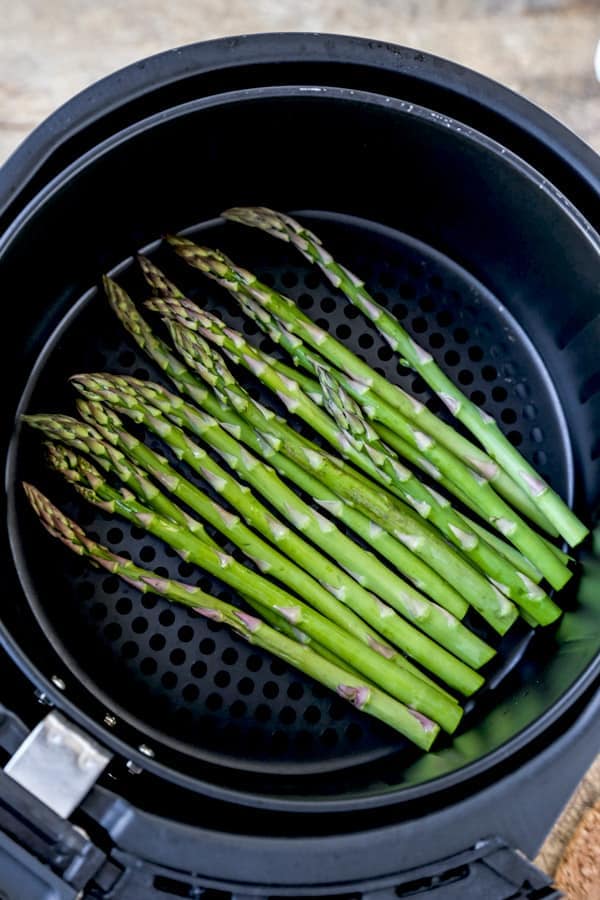
How to Air Fry Asparagus
- Preheat the air fryer to 400ºF and let it warm up for 5-7 minutes.
- Trim the ends of the asparagus spears.
- Toss the asparagus in a little olive oil, salt and pepper and place them in the air fryer in one single layer.
- Air fry for 10-15 minutes, until the heads are light brown and the rest of the of the body is tender.
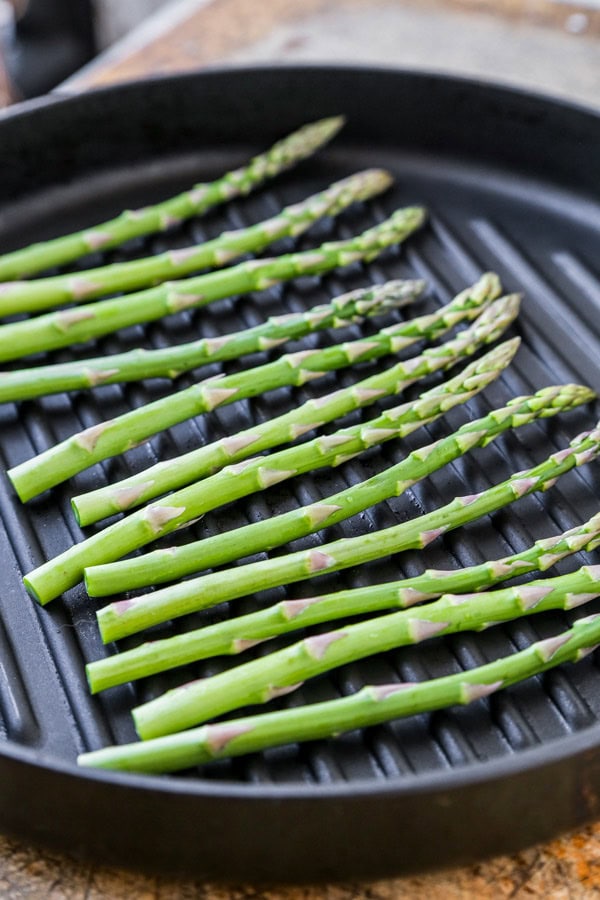
How to Cook Asparagus on the Stove
- Trim the ends of the asparagus spears.
- Grab a skillet and add 1 tablespoon of extra virgin olive or any other oil with a high smoking point.
- Turn the heat to medium and when the oil is hot, add the asparagus.
- Cook for about 10 minutes, flipping the spears once or twice so they have a nice charred outside.
- Season with salt and pepper, maybe a squeeze of fresh lemon juice, and serve.
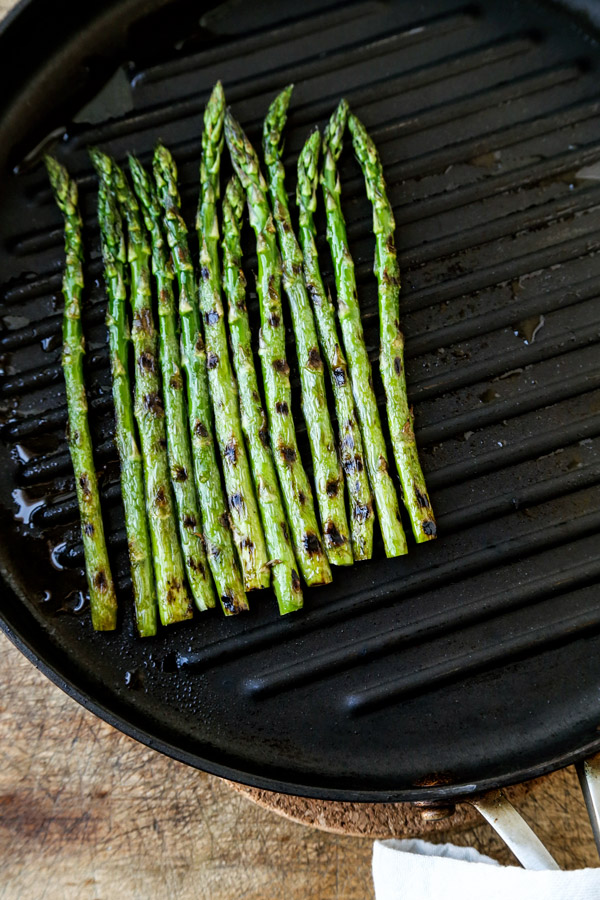
How to Grill Asparagus
- Trim the ends of the asparagus spears.
- Preheat your grill.
- Toss asparagus in a little olive oil and salt and pepper.
- Grill over direct, high heat for 2-3 minutes for thin spears, or 5-6 minutes for the thicker ones.
The key to getting a good char on grilled asparagus is cooking over high heat. Add a bit of olive oil to your asparagus spears and hit them with some salt and pepper. If the heat is high on your grill, you’re ready to put them on.
Long and thin spears can easily fall through the gaps on grill grates so it’s a good idea to lay them sideways or diagonally. A great way to prevent the asparagus spears from falling through the grate is to skewer five or six of them together. Soak bamboo skewers in water for about an hour – then skewer 5-6 asparagus spears together at the top, bottom and through the middle.
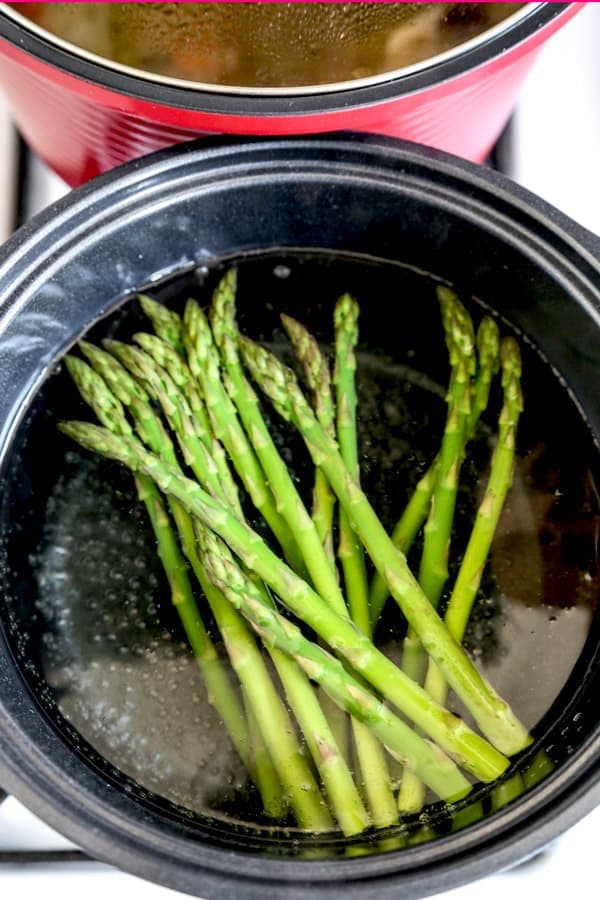
How to Boil Asparagus
- Trim the ends of the asparagus spears.
- Fill a medium pot with 4-6 cups water and 1 tablespoon salt.
- Bring to a boil, add asparagus and cook for 3-4 minutes (depending on thickness), until tender but still yielding a crunch.
- Drain and shock asparagus in ice cold water to halt cooking.
- Drain again and dry them with paper towel.
Blanching is a technique that delivers veggies in a cooked state, while still retaining their vibrant color and a bit of its natural crunch. In this case, the asparagus is scalded in salted boiling water and then cooled in an ice water bath (or just super cold water if you don’t have ice handy) to immediately stop the cooking process. It’s an easy way to prepare asparagus that you may not be eating immediately after cooking – or have plans for in other dishes.
What you’re looking for is asparagus, very lightly cooked with a perfect crunch and a vibrant green pop.
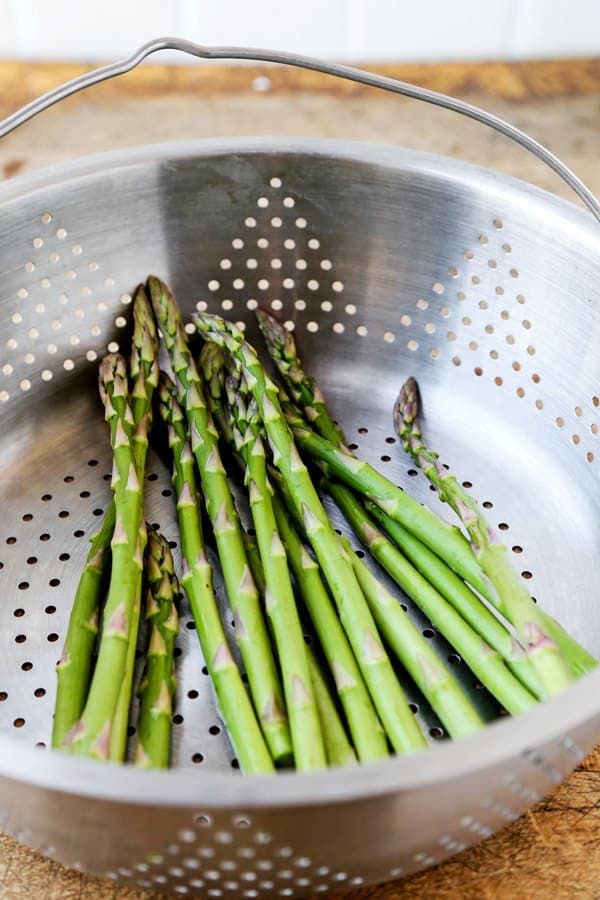
How to Steam Asparagus
- Trim the ends of the asparagus spears.
- Put the asparagus in a steamer basket and place the basket in saucepan or a pot.
- Add 1-2 inches of water to the saucepan or pot, making sure the water doesn’t reach the asparagus, and bring to a boil.
- Cover the saucepan or pot and steam for 3-5 minutes for thin asparagus, or 6-8 minutes for thick.
Properly steamed veggies keep a bit of their crunch – and retain a ton of their natural goodness that you might lose if boiling. The boiling water sits below and provides heat and moisture to your asparagus. Again, thickness will play a role in how long you’ll want to cook your asparagus spears. The key is to steam your veggies long enough that they’re supple, but not so that they overcook and become mushy.
A big benefit of steaming your asparagus is that you can cook it without fatty cooking oils like butter.
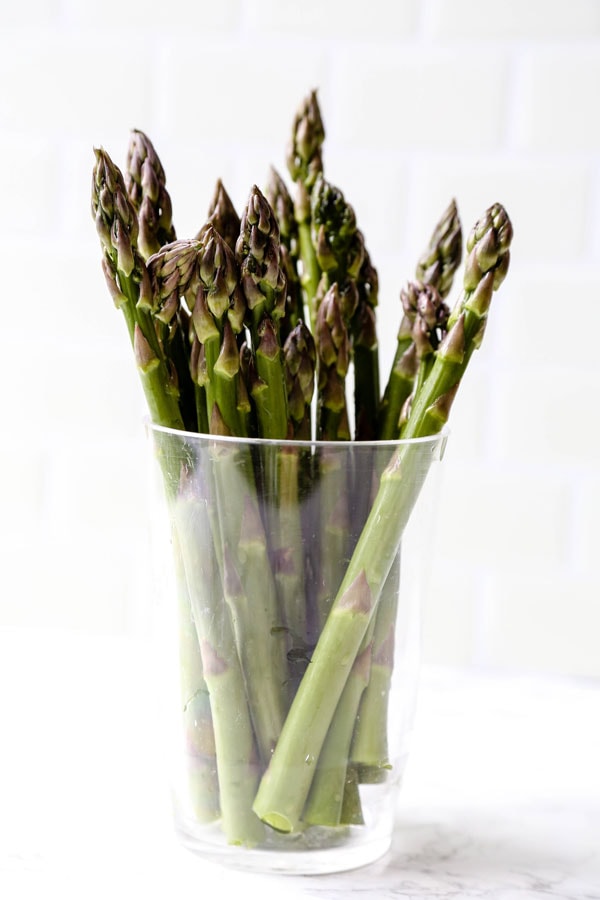
How to Cook Asparagus in the Microwave
OK… This is one of those cooking techniques that, at first glance, seems like it might be a bit of a cooking-cop-out. But guess what – microwaving fresh asparagus may just be one of the best ways to cook those verdant green stalks.
It’s so good!
- Trim the ends of the asparagus spears.
- Lay your trimmed asparagus flat on about 3-5 wetted and wrung-out paper towels.
- Add a bit of salt and roll the paper towels and asparagus into a bundle.
- Cook in the microwave for around 3 minutes.
- Test doneness and add more time in 20 second increments if needed.
The secret is in the paper towels, you want them wet but not soaked. Asparagus already has almost enough water inside itself to steam in a hot environment. Adding wet paper towels provides the rest of the moisture it’s going to need.

How to Tell if Asparagus is bad?
Wondering if you’ve waited too long to cook the asparagus you bought a while back? Here a few ways to tell when they have gone bad
- If a dull green hue appears or you see wrinkles in the stem, it may be time to part ways and pick up a fresh bunch.
- Dry or flaky stems is a bad sign. Same if you squeeze the bunch and there isn’t an audible squeak.
- Is it wilting and limp – or super bendy without snapping? Buh-bye.
- I you see mold appearing anywhere on the spear, that’s an instant dump in the trash can.
Now, I’m not saying you can’t cook and eat bendy asparagus in a pinch – but it’s not nearly as enjoyable.
How to Store Cooked Asparagus
Save the cooked asparagus in a shallow airtight storage container or wrap them in aluminum foil. They will keep refrigerated for 3-5 days.
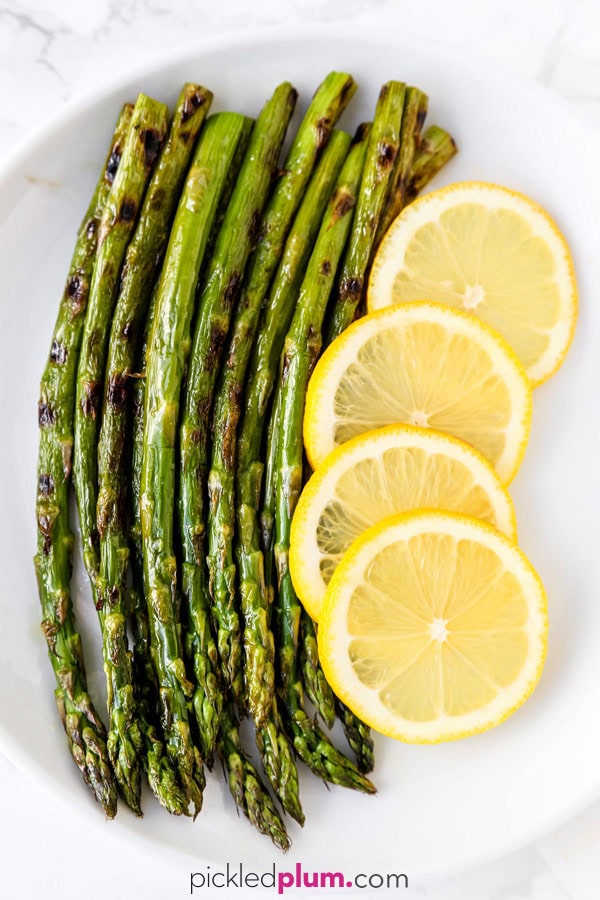
Easy asparagus recipes
Looking for some easy recipes for asparagus you can whip up in your home kitchen? Here are some of my favorites:
- Sauteed asparagus with garlic and oyster sauce
- Bacon Wrapped Asparagus With Honey Miso Glaze
- Breakfast Asparagus, Radish and Ricotta Toast
- Brussels Sprouts Salad With Kale and Asparagus
- Asparagus and Lemon Egg Drop Soup
Other simple, easy, step-by-step ‘how to’ guides:
- How to Make Japanese Rice
- How to Boil Eggs
- How to Make Buttermilk
- How to Make Quinoa
- How to Cook Jasmine Rice
Did you like this tutorial on How to Cook Asparagus? Are there methods you use that you would like to share? Share your tips and recommendations in the comments section below!















Great tips. I grow asparagus, and the thickness of the stem is not an indication of how mature the individual spear is, but rather how mature the parent plant is (the variety and growing conditions affect thickness, too). A spear emerges from the ground at pretty much the thickness it will be when it’s picked. It doesn’t increase in diameter as it grows. Thicker spears come from older plants, and thickness does not affect tenderness, although thinner spears are somewhat finer textured, in my experience.
Thanks for sharing Christine!